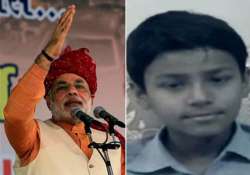Timeline: The rise of Narendra Modi
New Delhi: Let's take a look at the meteoric rise of Gujarat chief minister Narendra Modi to the position of BJP's prime ministerial aspirant: September 17, 1950: Narendra Damodardas Modi born in Vadnagar, Gujarat in a
